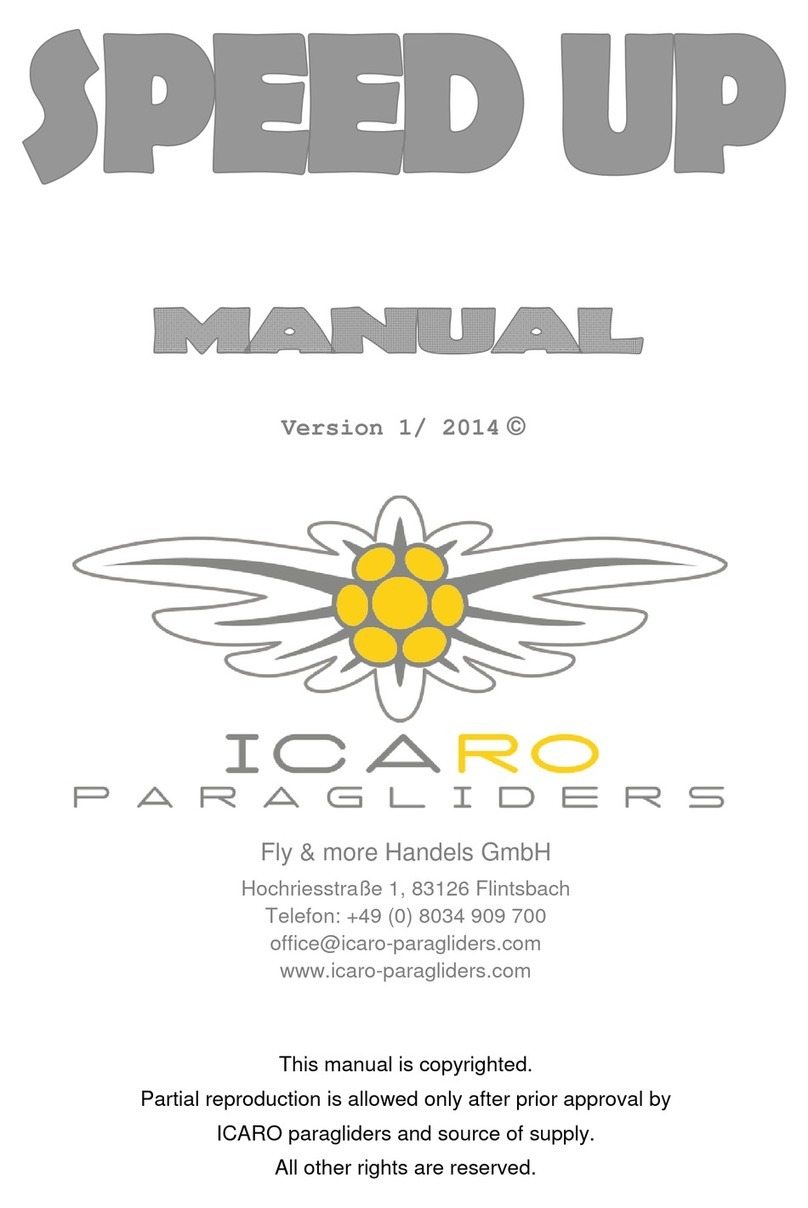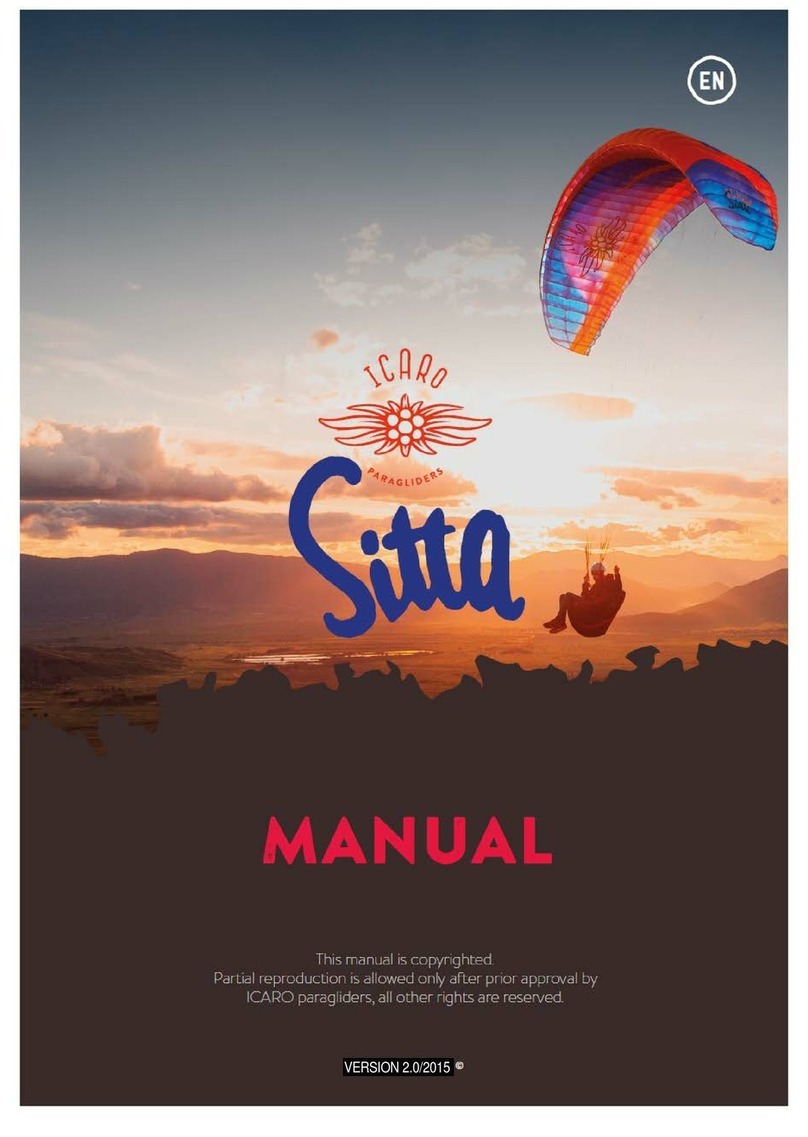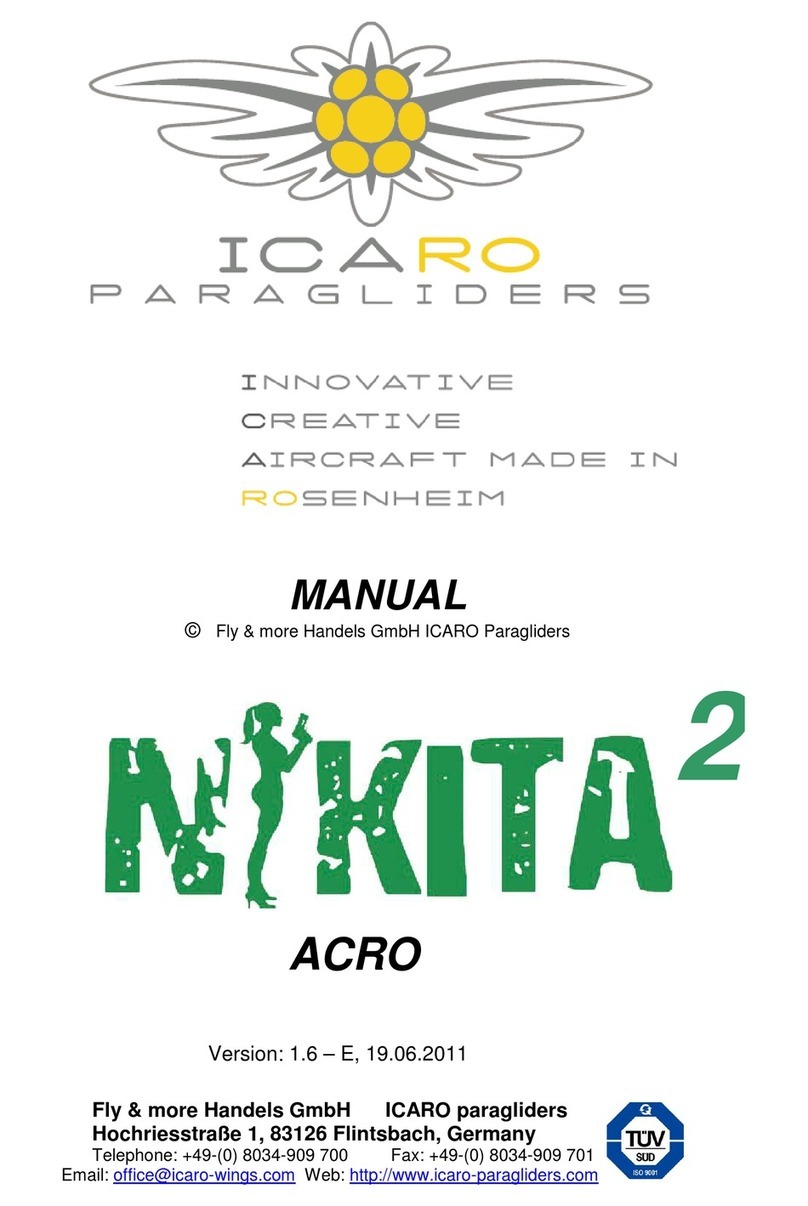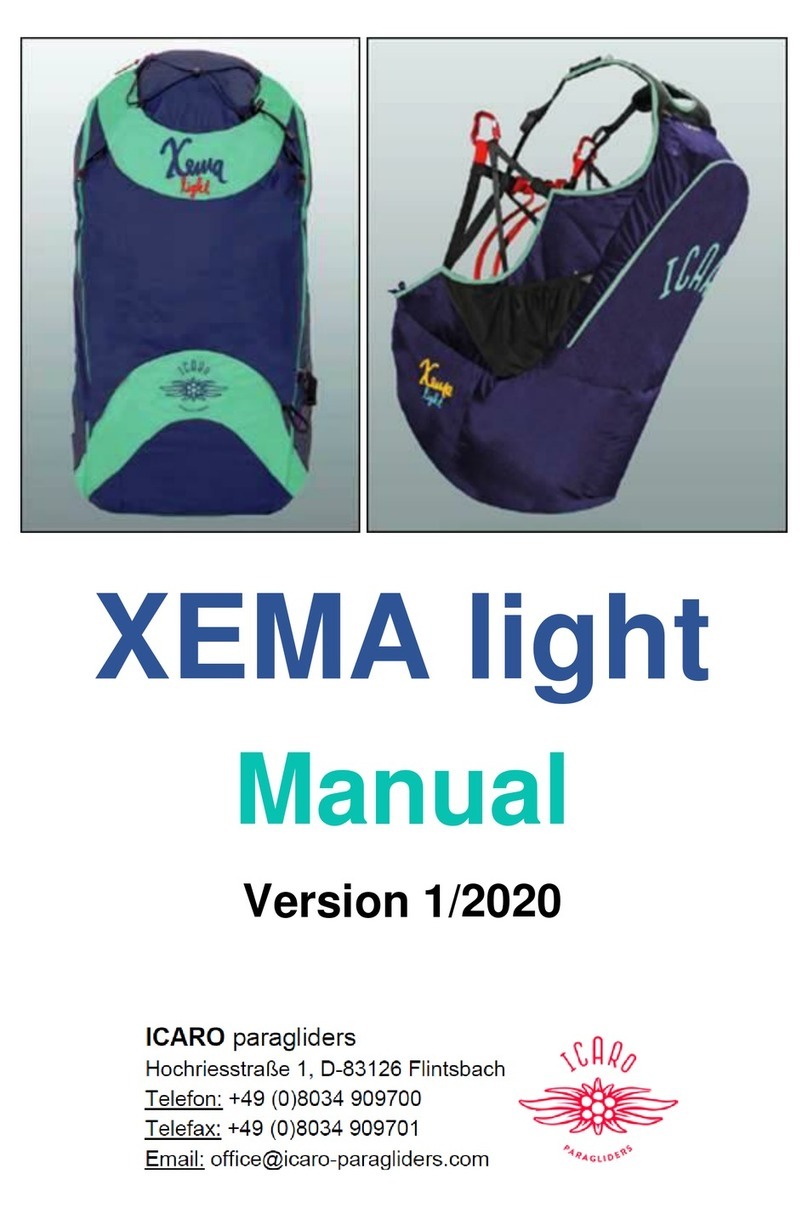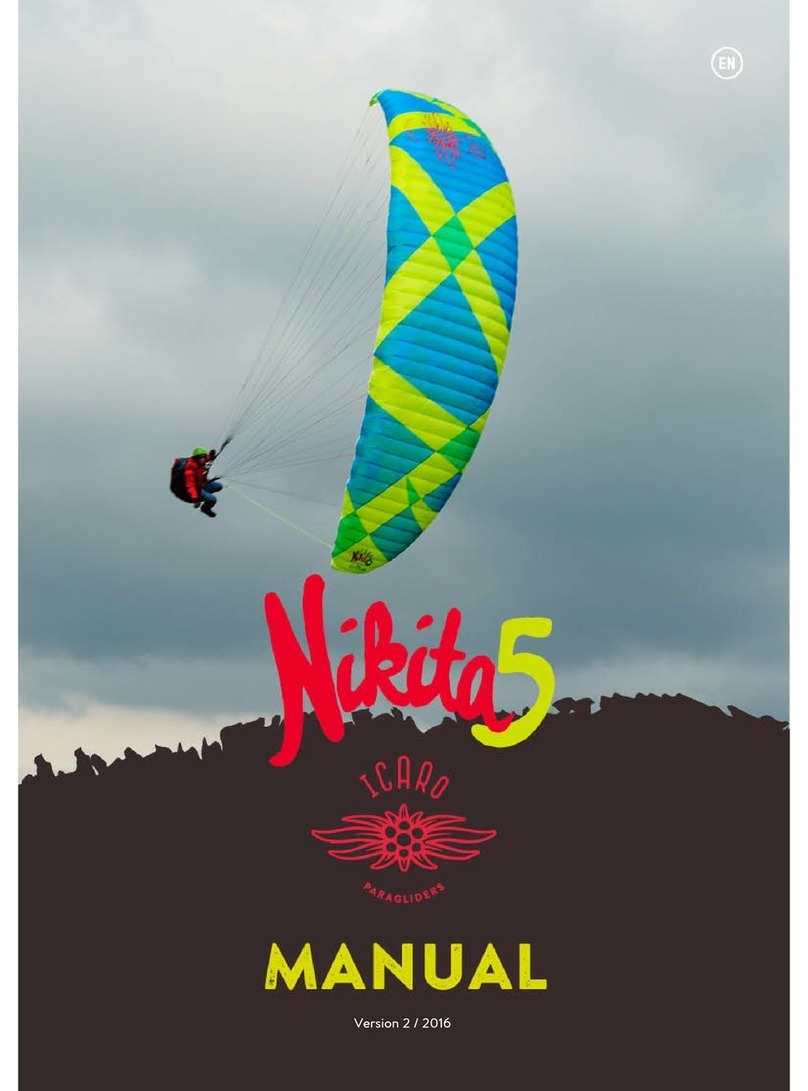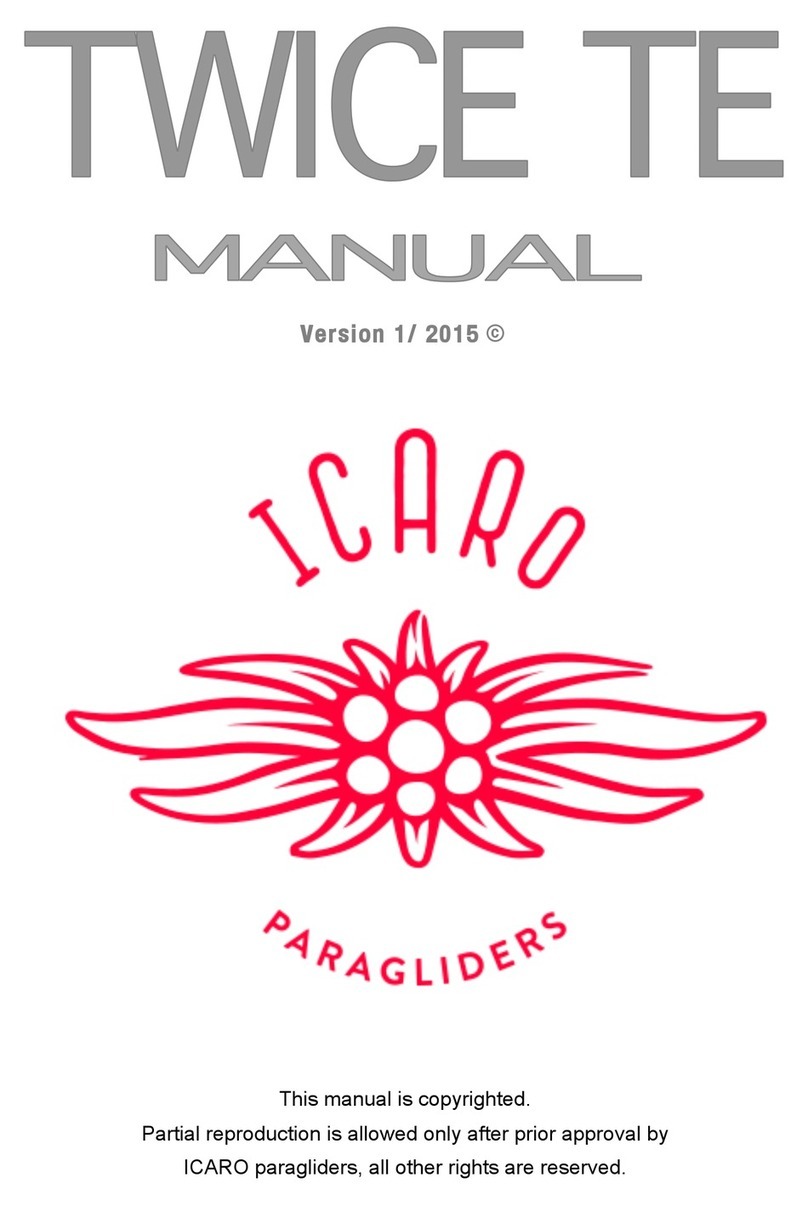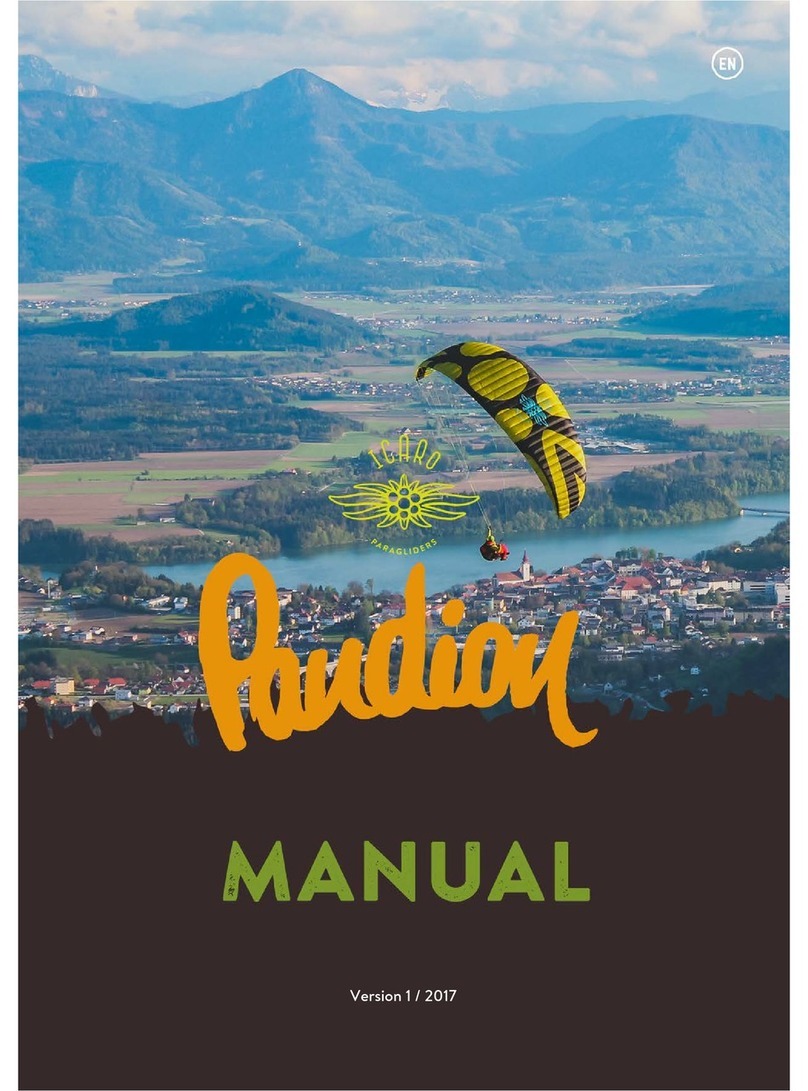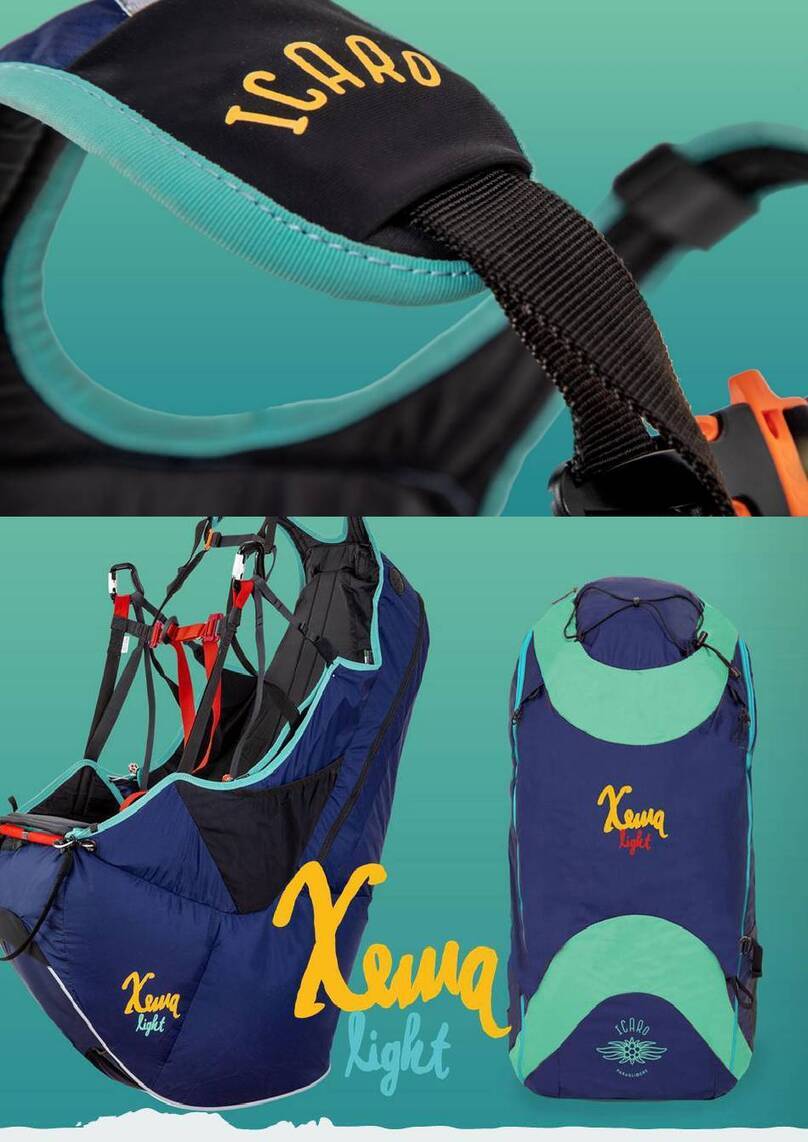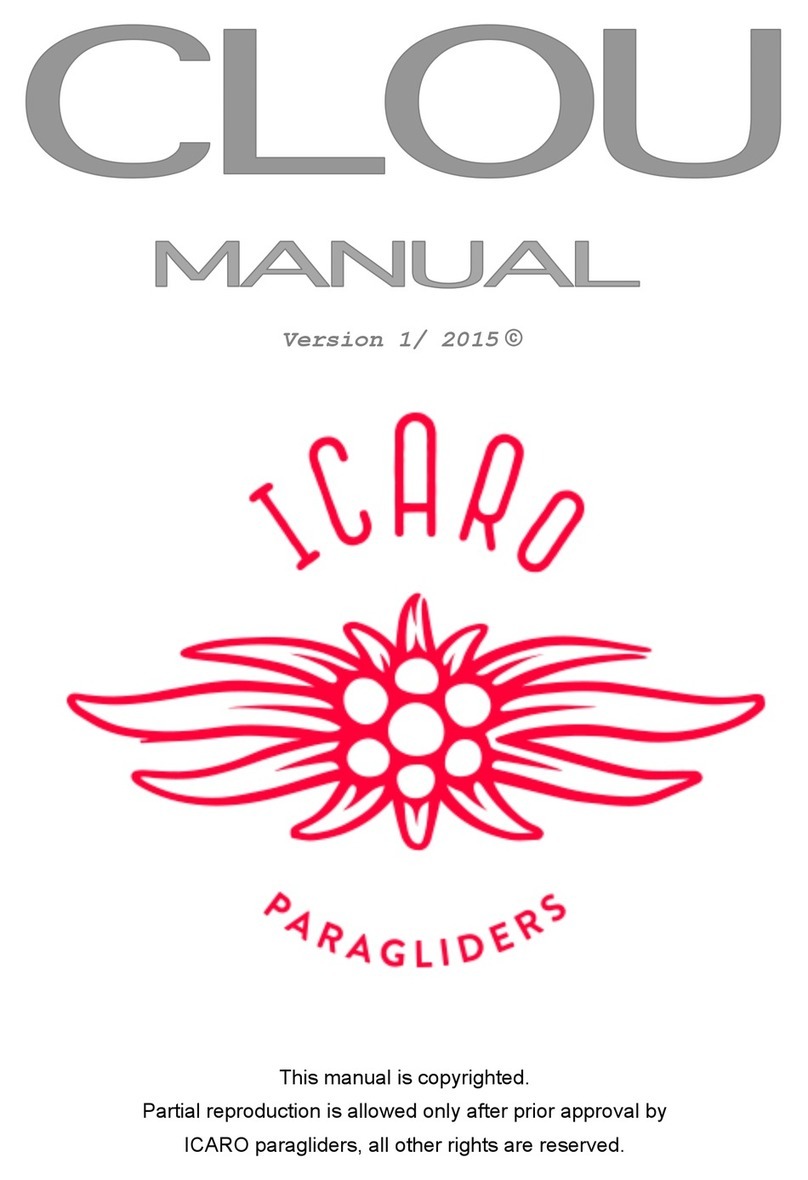Page 10
A stronger pulling of the rear risers and a loosening of the A-risers will cause the
glider to rest again. Now you can lead the glider either leisurely or quickly upwards,
depending on your taste. Do not forget to leave the rear risers loose and the A-risers
under tension. Finally, simply release the A-risers and use the rear risers (or brake
lines) to control them with the hand that has now become free.
Strong Breeze and moderate gusts
Only use the rear straps in this technique. Each hand holds a rear strap. Slightly tense
the A-straps, then slightly bent forward, take a quick step backwards and pull up the
glider with impulse. The A-risers are only pulled from the body.
At the same time, the glider will be taken quickly. With the rear straps, counter-
control if necessary to prevent overshooting.
If the pressure on the glider is too great, grab the rear straps and with strong, speedy
pull down the glider and it falls back to the ground.
If you can hardly feel any pressure, the screen is probably too far ahead. Then brake
something.
Strong wind with lively gusts
Here, in addition to the rear straps, we take the next front into the hands (the C- and
D-plane only with 4-liners).
In hybrid gliders, the C and D lines are already grouped in the gallery area.
The pull-up is more dynamic and you have to visibly approach the glider when you
put on. The control is done exclusively via the combined C / D-lines. In strong winds
one should always keep them in their hands, unless the wind blows.
If the wind speed is higher than the trimm speed of the glider, ground handling will
be broken by rapid and powerful pulling of the C / D lines.
In the case of heavy wind soil handling, an uncontrolled glider can hit the ground at
a very high speed. This can lead to profile cracks, damage to the seams or the cloth.
The following links we commend:
https://www.dhv.de/web/fileadmin/user_upload/files/2015/Artikel_Sicherheit/Start-
Landetechnik/2012_175_rueckwaertsaufziehen.pdf
http://www.skymaster-paragliding.de/files/Rueckwaertsstart.pdf
https://www.youtube.com/watch?v=4NzKV7Co1zg
